Ramesh Singh Summary: Planning in India- 2 | Indian Economy for UPSC CSE PDF Download
Multi- Level Planning
It was by the late 1950s and early 1960s that the states demanded the right to plan at the state level,
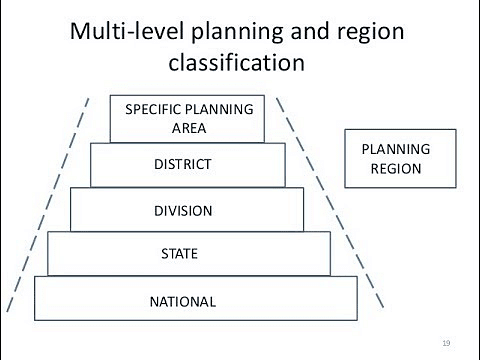
- By the mid-1960s, the states were given the power to plan by the Centre, ad vising them that they should promote planning at the lower levels of the administrative strata, too, i.e., at the district level planning— via the municipalities and corporations in the urban areas and via block level through panchayats and the tribal boards.
- By the early 1980s, India was a country of multilevel planning (MLP) with the structure and strata of planning.
(i) First Strata :Center-Level Planning At this level three types of Central Plans had evolved over the years— the Five Year Plans, the Twenty-Point Programme and the MPLADS.
(ii) Second Strata : State-Level Planning By the 1960s, the states were planning at the state level with their respective planning bodies, the state Planning Boards with the respective CMs being their de-facto Chairman. The plans of the states were for a term of five years and parallel to the concerned Five Year Plans of the Centre.
(iii)Third Strata : Local Level Planning By the early 1980s, plans were being implemented at the local level via the blocks and had the District Planning Boards (DPBs) as the nodal agency. Due to socio-economic differentiations among the population, local-level planning in India developed with its three variants, namely :
(a) Village-Level
(b) Hill Area Planning
(c) Tribal Area Planning
Way to Decentralised Planning
- A Economic planning was basically an element of the centralised kind of political system (i.e., the socialist and the communist).
- When India decided in favour of a planned economy it was to face double challenges :
(i) The first challenge was to realise the objectives of planning in a time-bound frame.
(ii) Making economic planning a suitable instrument of development in the democratic set up— to democratise and decentralise the process of planning itself.
(iii) The government tried to decentralise the planning process by setting up the NDC and promoting the MLP, but without being able to achieve the desired results.

- By the late 1980s, a direct link was established between development and democracy.
- Though the planning at the central and the state levels are still extra-constitutional activities, it has become constitutional at the level of local bodies.
- The Panchay at Adhyakshas handed over a '21 Point Memorandum' to the government which specially dealt with the financial status of the PRIs. In July 2002, while the then PM was addressing the annual meet of the District Rural Development Agency (DRDA), he announced that the PRIs will be given 'financial autonomy' very soon.
- He further added that once there is a political consensus, the government might go in for further constitutional amendment. Unfortunately, the same coalition (i.e., the NDA) did not come to power in the forth coming general elections.
The Planning Commission and the Finance Commission
- Federal political systems provide independent financial control to the central as well as the state governments so that they are able to perform their exclusive functions.
- He Constitution of India has made elaborate provisions, i.e., setting up of a Finance Commission to recommend to the President certain measures relating to the distribution of financial resources between the Union and the states.
- P.J. Rajamannar who headed the finance Commission (1966-69 ) suggested to clearly define the relative scope and functions of the two commissions by amending the Constitution, and the Planning Commission was advised to be made a statutory body in dependent of the government.
- The Fiscal Responsibility and Budget Management (FRBM ) Act in 2003, which empowers the state governments to go for market borrowings to fulfil their plan expenditure with out prior permission from the Central Government.
- A general tendency of enabling the states to collect more and more taxes, the Value Added Tax (VAT) being a glaring example by which almost all states have been able to increase their gross tax revenue receipts.
A Critical EvaluationLack of 'Perspective' in Planning
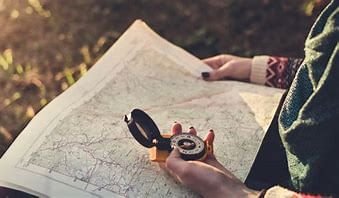
- To have perspective in planning, two basic elements need to be fulfilled, namely —
(i) Planning should be evaluation-based, and
(ii) 'Long-term' goals should be followed up besides the 'short-term' goals. - In the Indian content, the succeeding plans have been always commenced without the full evaluation of the preceding Plan. This was mainly due to the following reasons :
(i) Lack of a nodal body responsible for data collection at the national level;
(ii) Federal nature of polity made data collection full of delays and also due to higher dependence on the states.
(iii) Speedier data delivery was not possible. - The National Statistical Commission (Chaired by C.Rangarajan), 2000, the government discussed to set up a nodal body for data collection at the pan-India level, cutting across federal hurdles.
Failure in Promoting a Balanced Growth and Development
- Indian planning is blamed for failing the objective of a regionally balanced growth and development.
- Though the Second Plan itself had noticed this fact, the measures taken were not sufficient or were short-sighted.
- Economic planning at the national level has proved to be a highly effective tool of promoting balanced growth.
- Political reasons, enough discrepancies cropped up in the method of allocating funds to the states. At the theoretical level, the governments knew the remedies, but at the practical levels politics dominated the planning process.
- Democratic immaturity and politicisation of the planning process is to be blamed for this.
Highly Centralised Nature of Planning
- Decentralising the process of planning has been a major goal of the governments since the 1950s.
- But after Nehru, with every Plan we see greater tendency of centralisation in the planning process. Setting up of the NDC and promoting multi-level planning (MLP) did not serve much purpose in this direction.
- It has been among the criticised areas of planning in India as the National Planning Committee as well as the First Plan itself had called for 'democratic planning'.
- In the country. By the mid-1980s, the mindset of the Centre went for a change and the need for decentralised planning got proper attention.
- Finally, by early 1990s two constitutional amendments (i.e., the 73rd and the 74th) promoted the cause of decentralised planning by delegating constitutional powers to the local bodies.
Lop-sided Employment Strategy
Planning in India has been tilted heavily in favour of'capital intensive' industries, especially from the Second Plan onwards. Such industries in the public sector could not generate enough employment.
Excessive Emphasis on PSUs

- Indian planning emphasised on public sector undertakings (PSUs) for the right reasons, but in the wrong way and for a considerably longer period of time.
- The state's monopolies in certain areas continued over such a long period that too in losses that there came a demand-supply gap in the major goods and services produced by the PSUs.
- Though very conducive policy changes were effected after the country started the reform processes, the hangover of the past is still looming large.
Agriculture Overshadowed by the Industry
- Promoting the cause of faster industrialisation over time became so dear to the planning process that the agriculture sector got badly over-shadowed.
- Though the Plans were highlighting or prioritising agriculture, the industrial sector and the PSUs were glorified in such a way that time and resources both were scarce for the agriculture sector.
Faulty Industrial Location Policy
- There are time-tested theories of 'industrial location' considering the nearness of raw materials, market, cheaper labour, better transportation and communication, etc.
- But the Plans always prioritised setting up of new industrial units (i.e., the PSUs) in the backward regions of the country, which falsify the theories of industrial location.
Wrong Financial Strategy

- Mobilising resources to support the highly capital-intensive Plans (courtesy the PSUs) has always been a challenge for the government.
- To support the Plans, no stones were left unturned namely, going for a highly complex and liberal tax structure, nationalising the banks, etc.
- Ultimately, tax evasion, the menace of parallel economy and lesser and lesser capital for the private sector were the bane of India.
Politicisation of the Planning Process
- In a democratic political system, almost every issue of socio-political importance is influenced by politics.
- It is more correct in the case of lesser matured democracies. The same stands true for the process of planning in our country.
- Greater and greater politicisation of the planning process culminated in such a design that at times economic planning served the opposite purpose.
Inclusive Growth
Inclusive grow this a growth process which yields broad-based benefits and ensures equality of opportunity for all (UNDP and the 11th Plan). Fundamentally, the ideas of growth and development already include the element of 'inclusiveness' in them, but at times, due to certain reasons, the processes might occur in non-inclusive manner.
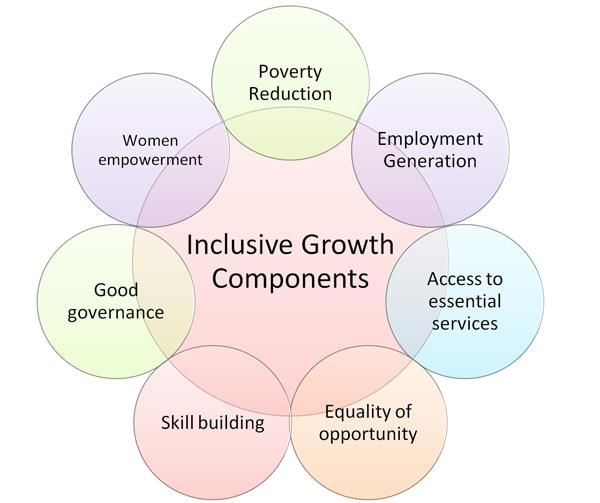
(i) Short-term policy
- This policy is aimed at supplying those goods and services to the disadvantaged and marginalised sections of society which are bare minimum and are essential in nature.
- Several Central Sector Schemes and Centrally Sponsored Schemes are run by the governments for this purpose.
- This policy touches the are as like:
(a) Food and nutrition (Annapurna, Antodaya, Mid-Day Meal, and the last being National Food Security Act, etc.).
(b) Healthcare and sanitation (National Health Mission, Total Sanitation Campaign, ASHA, Mission Indradhanush, and the last being Swachh Bharat Abhiyan, etc .)
(c) Housing (Indira Aawas Yojana, Rajiv Aawas Yojana, etc).
(d) Drinking water (National Rural Drinking Water Programme, etc.)
(e) Education (Sarva Shiksha Abhiyan, Rashtriya Madhyamik Shiksha Abhiyan, Model School Scheme, etc.).
(ii) Long-term policy
- This policy is aimed at bringing in self-dependence in the target population.
- This policy contains in itself the sustain ability element, too.
- The attempts by the governments may be classified as given below :
(a) All the schemes which aim at poverty alleviation and employment generation
(b) All the programmes which promote education at any level
(c) Vocationalisation of education
(d) Skill Development
Resource Mobilisation

- Resource mobilisation is a broad term which includes raising and directing the resources (physical and human) of the economy to realise the desired socio economic objectives.
- It involves all the economic policies activated by the governments— we can perceive it to be the very essence and the end result of the 'fiscal policies' of both the Centre and the states.
- For Indian economy to move on the path of desired growth and development, the Government of India (Gol) needs to take care of the issue of resource mobilisation for various agents in the economy, namely -
(a) Gol,
(b) State governments,
(c) Private sector
(d) General public
Investment Models
- 'Investment Models' are the means and tools by which the Gol has tried to mobilise required funds (resources) to promote the different goals of planned development. Since India started the planning process (1951).
- We see differing models being tried by the governments to mobilise resources—it has been a kind of 'evolutionary' process.

Phase-l (1951—69)
- This was the phase of 'state-led' development in which we see the Gol utilisin external means to mobilise required resources.
- The main areas of resource allocations were for infrastructure and social sector.
- The famous Mahalanobis Plan gets implemented during this period. In this period.
Phase-ll (1970—731)
- With the enactment of the Industrial Policy of 1970 we see Gol deciding in favour of including 'private capital' in the process of planned development—but not in a big and open way.
- The idea of 'Joint Sector' comes under which a combination of partners— Centre, state and private sector —could enter the industrial sector.
Phase-III (1974-901)
With the enactment of the FERA in 1974 we see the government, for the first time, proposing to take the help of 'foreign capital' in the process of planned development— but not via cash foreign investment—only through the 'technology transfer' route that too up to only 26 per cent of the total project value proposed by the private sector.
Phase-IV (1991 onward)
Due to prolonged follow-up of weak fundamentals of economics and immediated after Gulf War-I, India headed for a severe Balance of Payment crisis by late 1980s, which made India go to the IMF for financial help. It comes up but at some 'conditions'—the design of the 'conditions' made India to go for a 'restructuring' of the economy under the process of economic reforms commencing in 1991.
Central Sector Schemes and Centrally Sponsored Schemes
- The exercise of planned development in India has evolved two type of schemes over the time, viz.,— Central Sector Scheme and Centrally Sponsored Scheme.
- The names are derived from the pattern of funding and the modality for implementation.
- As per the Union Budget 2016-17, the existing 1,500 such schemes were restructured into 300 by the Gol to prevent overlapping of expenditure and help in better monitoring and evaluation.
Central Plan Assistance
- Normal Central Assistance (NCA) : The distribution of the NCA is formula based (Gadgil-Mukherjee Formula) and is untied. Gadgil Formula of determining the Central Assistance to the State is being adopted from the Fourth Plan and revised subsequently— allocation was made by the Planning Commission.
- Additional Central Assistance (ACA) : This is provided for implementation of externally aided projects (EAPs), and for which presently there is no ceiling. Unlike NCA, this is scheme based. The details of such schemes are given in the Statement 16 of the Expenditure Budget Vol. I. There can be one time ACA and advance ACA.
- Special Central Assistance (SCA) : This is provided for special projects and programmes, e.g., Western Ghats Development Programme, Border Areas Development Programme, etc.
CSSs Restructured
- For the 12th Plan period [2012-17] the existing 137 CSSs were restructured into 66 schemes, including the 17 flagship programmes.
- The government had set up an expert Committee (Chaired by B. K. Chaturvedi, member of the erstwhile Planning Commission) for the purpose which submitted its report by late-2011.
- The 14th FC recommended that sector-specific transfers from the Union to the states/UTs should be confined to sectors like education, health, drinking water and sanitation.
- However, in view of the preponderance of CSSs being interventions in key sectors of national importance, the Gol kept 50 of the 66 ongoing CSSs in the Union Budget 2015-16.
Core of the Core Schemes
- National Social Assistance Programme
- Mahatma Gandhi National Rural Employment Guarantee Programme
- Umbrella Scheme for Development of Schedule Castes
- Umbrella Programme for Development of Scheduled Tribes
- Umbrella Programme for Development of Minorities
- Umbrella Programme for Development of Other Vulnerable
Groups Core Schemes
- Green Revolution
- White Revolution
- Blue Revolution
- Pradhan Mantri Krishi Sinchai Yojana
- Pradhan Mantri Gram Sadak Yojana
- Pradhan Mantri Awas Yojana [PMAY]
- Jal Jeevan Mission [JJM]
- Swachh Bharat Mission [Urban]
- Swachh Bharat Mission [Gramin]
- National Health Mission
- National Education Mission
- National Programme of Mid-Day Meal in Schools
- Umbrella ICDS
- Mission for Protection and Empowerment for Women
- National Livelihood Mission - Ajeevika
Independent Evaluation Office

- An Independent Evaluation Office [IEO] was created by the Gol in February 2014, at an arm's distance from the government with the objective of strengthening public accountability of some of the important social sector programmes, which account huge resource mobilisation such as the flagship programmes.
- Conceived on the lines of Independent Evaluation Office (IEO] of the IMF, the body was created on the basis of international experiences, in cooperation with the World Bank and the British DFID (Department for International Development]
- It was modelled on the lines of Mexico's National Council for the Evaluation of Social Development Policy.
Programme Evaluation Organisation (PEO)
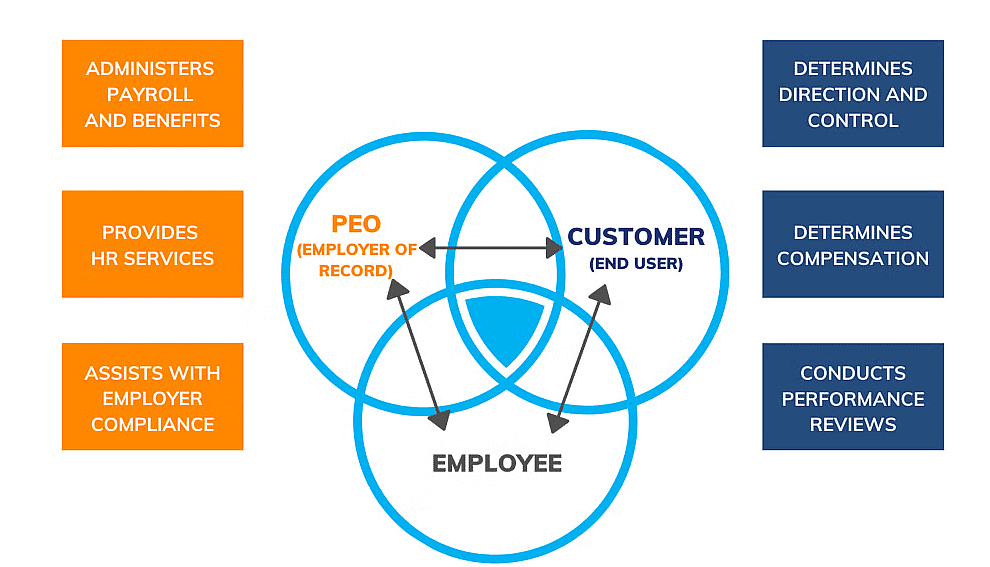
- The Programme Evaluation Organisation (PEO) was established in October 1952, as an independent organisation, under the general guidance and direction of the Planning Commission (PC) with a specific task of evaluating the community development programmes and other Intensive Area Development Schemes.
- The evaluation set up was further strengthened by the development of methods and techniques of evaluation in the 1st Plan and setting up of evaluation machineries in the States during the 3rd (1961-66) and 4th (1969- 74) Plans.
- Gradually, with the extension of the programmes/schemes in a variety of sectors, viz.
- Agricultural cooperation, rural industries, fisheries, health, family welfare, rural development, rural electrification, public distribution, tribal development, social forestry, etc.
- The evaluation work undertaken by the PEO was extended to other important CSSs.
Development Monitoring and Evaluation Office (DMEO)
- The Development Monitoring and Evaluation Office (DMEO) was constituted by merging the erstwhile Program Evaluation Office (PEO) and the Independent Evaluation Offire (IEO) in September 2015. As an attached office under the Niti Aayog, it aims at fulfilling monitoring and evaluation (M&E] mandate (i.e., function] of the Aayog.
- It is entrusted with building M&E ecosystem in the country with the following functions:
(i) Monitoring progress and efficacy of policies/programmes, taking initiatives to help improvements including necessary mid-course corrections.
(ii) Evaluating implementation of programmes and identification of needed resources to strengthen success and scope of delivery.
NITI Aayog
- NITI Aayog was established in 2015, replacing the Planning Commission, to redefine India's development agenda.
- The transition from 'Planning to NITI' signifies a paradigm shift towards cooperative federalism and inclusive growth.
- The government aims to create a collaborative platform for national development, emphasizing states as equal partners.
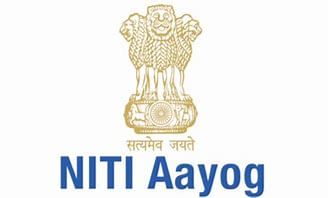
Changing Contours of India
- Demographic Shift: India's population growth and urbanization demand innovative policies to harness the youth demographic dividend.
- Economic Shift: From a modest GDP to a thriving economy, necessitating a recalibration of the government's role from directive to supportive.
- Globalization: India's integration into the global economy underscores the need for agile policies and decentralized decision-making.
- Role of States: Recognizing states as drivers of development and advocating for tailored solutions over a one-size-fits-all approach.
- Technology Paradigm: Embracing technology to enhance transparency, efficiency, and governance effectiveness.
Need for Change in Economic Institutions
- Reform Urgency: Calls from experts, parliamentary committees, and past leaders highlight the necessity for restructuring institutions like the Planning Commission to adapt to economic reforms.
- Dr. Manmohan Singh's Address: Former PM's farewell speech to the Planning Commission underscores the need for adaptation to the evolving economic landscape.
- Mahatma Gandhi's Philosophy: Advocating for continuous evolution and avoiding outdated practices in governance.
Functions of the NITI Aayog

- Cooperative and Competitive Federalism: Fostering collaboration between states and the center while promoting healthy competition.
- Shared National Agenda: Developing a cohesive vision for national development with active state participation.
- Decentralized Planning: Empowering states and local governments in planning and implementation.
- Vision and Scenario Planning: Crafting long-term strategic frameworks and monitoring progress.
- Domain Strategies: Building expertise and assisting ministries in policy formulation.
- Sounding Board: Providing critical feedback and alternative viewpoints.
- Knowledge and Innovation Hub: Accumulating best practices and facilitating replication.
- Implementation Facilitation: Supporting the execution of plans with tangible outcomes.
- Harmonization: Promoting coherence and synergy across government actions.
- Conflict Resolution: Providing a platform for resolving inter-sectoral and inter-state issues.
- Coordinating Interface with the World: Engaging with global expertise and resources.
- Internal Consultancy: Offering advisory services to governments.
- Capacity Building: Enhancing managerial and technical capabilities across administrations.
- Monitoring and Evaluation: Ensuring data-driven policy-making and assessing impact.
Guiding Principle: Inclusive Development

- Antyodaya: Prioritizing service to the poorest and most marginalized, echoing Pandit Deendayal Upadhyay's philosophy.
- Inclusion: Empowering all sections of society and addressing identity-based inequalities.
- Village Integration: Leveraging the cultural and economic vitality of rural areas.
- Demographic Dividend: Investing in education and skilling to harness India's youth potential.
- People’s Participation: Fostering citizen engagement in governance and development processes.
- Governance: Promoting transparent, accountable, and outcome-driven governance.
- Sustainability: Integrating environmental sustainability into development planning.
Structure of the NITI Aayog
- Chairmanship: Prime Minister of India.
- Governing Council: Comprising PM, Vice Chairman, CMs, and other members.
- Regional Councils: Addressing region-specific issues.
- Special Invitees: Including domain experts nominated by the PM.
- Organizational Framework: Constituting full-time and part-time members, CEO, and support staff.
Vehicle of Good Governance
- Role in Good Governance: Providing strategic direction and facilitating participative governance.
- Governance Principles: Emphasizing cooperation and effectiveness at all levels of governance.
- Approach to Governance: Integrating good governance principles into NITI Aayog's functions.
- Vision of NITI Aayog: Envisioning the institution as a catalyst for good governance.
Concluding Remarks
- Innovative Approach: Embracing contemporary ideas and cultural ethos in policy-making.
- Integration of Growth and Cultural Dimensions: Recognizing the interplay between economic growth and cultural values.
- Transition from PC to NITI Aayog: Positioning NITI Aayog as a platform for inclusive and collaborative development.
Major Documents of the NITI
Three-Year Action Agenda
Fiscal Deficit Reduction: Aims to reduce fiscal deficit to 3% of GDP and revenue deficit to 0.9% of GDP by 2019-20, indicating fiscal discipline and macroeconomic stability.
Doubling Farmers' Incomes: Targets doubling farmers' incomes by 2022, emphasizing the importance of agriculture sector growth and job creation in industry and services.
Urban Development Measures: Recommends liberal floor space index (FSI) and flexible conversion rules for urban areas, aiming to promote efficient land use and urban development.
Regional Development Focus: Encourages development outcomes in specific regions such as North Eastern Region, Coastal Areas, Islands, North Himalayan states, Desert, and Drought-prone states, with a focus on improving connectivity and infrastructure.
Energy Sector Reforms: Focuses on energy sector reforms including consumer-friendly measures, reducing cross-subsidy in the power sector, and reforming the coal sector to ensure sustainable energy supply.
Emphasis on Science and Technology: Promotes science and technology through Public-Private Partnerships (PPP), establishing a National Science, Technology, and Innovation Foundation, and streamlining the patent regime to foster innovation and technological advancements.
Governance Promotion: Promotes governance reforms with reduced government intervention in non-essential areas, tackling tax evasion, simplifying tax system, strengthening public procurement, and undertaking judicial and police reforms to promote the rule of law.
Outcome-based Education: Shifts focus from input-based to outcome-based education with a ranking system, aiming to improve educational quality and outcomes.
Public Health Focus: Focuses on public health through increased government expenditure, addressing healthcare accessibility and quality.
Inclusive Development and Sustainability: Aims at building an inclusive society and adopting sustainable practices to tackle environmental challenges such as air pollution and water resource management.
Seven-Year Strategy Framework
Economic Target: Aims to make India a $3.0 trillion economy by 2022-23, indicating ambitious economic growth targets.
Focus on Growth and Employment: Prioritizes growth and employment generation, doubling farmers' incomes, and promoting sunrise sectors like fintech and tourism to enhance economic opportunities.
Science, Technology, and Innovation Ecosystem: Focuses on upgrading the science, technology, and innovation ecosystem to foster innovation-driven growth and competitiveness.
Citizens' Welfare and Inclusion: Invests in citizens' capabilities, particularly in health and education, while mainstreaming traditionally marginalized sections to ensure inclusive growth.
Optimization of Governance Processes: Streamlines governance structures and processes to enhance efficiency and effectiveness in achieving developmental outcomes.
Vision Document on Health
Responsive and Predictive Public Health System: Aims to make the public health system more responsive and predictive to enhance preparedness for action at all levels.
Citizen-friendly Surveillance System: Emphasizes the development of a citizen-friendly public health surveillance system, ensuring privacy and incorporating feedback mechanisms.
Improved Data-sharing Mechanism: Aims to enhance data-sharing between the Centre and states, considering health data as building blocks for informed decision-making.
Regional and Global Leadership in Public Health: Envisions providing regional and global leadership in managing public health emergencies, emphasizing collaboration and proactive measures.
Overall, the Vision 2035 document aims to shape the future of public health surveillance in India by addressing emerging challenges and ensuring a resilient system, especially in the context of the COVID-19 pandemic.
Recent Developments
1. NITI Aayog’s Vision 2047
Launched in 2023, Vision 2047 aims to transform India into a $30 trillion economy by 2047, aligning with the centenary of independence. It replaces the Five-Year Plans and earlier NITI documents (e.g., Three-Year Action Agenda).
- Economic Growth: Targets 8–9% annual GDP growth, focusing on manufacturing, services, and exports (e.g., PLI schemes for semiconductors).
- Sustainability: Emphasizes green energy (e.g., 500 GW renewable capacity by 2030) and net-zero by 2070.
- Inclusive Development: Prioritizes health, education, and skilling via schemes like Samagra Shiksha and PM Vishwakarma (2023).
Example: Vision 2047’s focus on AI and digital infrastructure supports India’s $300 billion digital economy (2024), with UPI handling 150 billion transactions annually.
2. Post-2017 Policy Frameworks
Post-2017 policies have reshaped planning, emphasizing infrastructure, self-reliance, and digital transformation, replacing rigid Five-Year Plans.
- PM GatiShakti (2021–2025): A $1.5 trillion infrastructure plan integrating 16 ministries, using GIS for logistics planning (e.g., 100+ PM GatiShakti terminals by 2024).
- Atmanirbhar Bharat (2020–2025): Promotes self-reliance via PLI schemes (₹1.97 lakh crore allocated by 2024) and MSME support (e.g., Emergency Credit Line Guarantee Scheme).
- Digital India: UPI, ONDC, and India Stack drive financial inclusion, with 80% of retail transactions digital by 2024.
Example: PM GatiShakti’s National Master Plan reduced logistics costs from 14% to 9% of GDP by 2024, enhancing decentralized planning.
3. Digital Economy and Planning
India’s digital economy, valued at $300 billion in 2024, is a cornerstone of modern planning, absent in the document.
- UPI and Financial Inclusion: UPI’s 150 billion transactions (2024) reduce transaction costs, supporting schemes like DBT (₹34 lakh crore transferred by 2024).
- ONDC (2022–2025): Open Network for Digital Commerce democratizes e-commerce, with 10 million transactions monthly by 2024.
- Data Governance: The Personal Data Protection Act (expected 2025) regulates data use, addressing privacy in planning.
Example: ONDC’s integration with MSMEs supports Vision 2047’s inclusive growth, reducing market access barriers for small businesses.
4. Climate Change and Green Planning
India’s net-zero by 2070 target and green policies are critical for 2025 planning, missing in the document.
- Carbon Credit Framework (2023): Enables firms to trade emission reductions, with 1,000 projects registered by 2024.
- PM Suryaghar Yojana (2024): Subsidizes 100 million solar rooftops, reducing energy costs and supporting Vision 2047’s sustainability goals.
- Green Hydrogen Mission (2023–2025): Aims for 5 MMT annual production by 2030, with ₹19,744 crore allocated.
Example: PM Suryaghar Yojana’s solar subsidies lower household energy costs, addressing externalities and supporting rural planning.
5. Agricultural Reforms and Planning
Recent agricultural reforms address the document’s critique of agriculture’s neglect, focusing on income and productivity.
- PM-KISAN (2019–2025): Provides ₹6,000 annually to 12 crore farmers, with ₹2.8 lakh crore disbursed by 2024.
- Digital Agriculture Mission (2024): Uses AI and drones for precision farming, targeting 10% productivity growth by 2030.
- MSP Reforms: Post-2021 Farm Laws repeal, MSP coverage expanded (e.g., 23 crops in 2024), with ₹2 lakh crore allocated.
Example: Digital Agriculture Mission’s drone technology supports Vision 2047’s goal of doubling farmer incomes by 2030.
6. Global Integration and Geopolitical Planning
- G20 Presidency (2023): Emphasized Global South priorities, influencing NITI Aayog’s trade and SDG strategies.
- India Semiconductor Mission (2022–2025): Attracts ₹1.5 lakh crore in investments, addressing supply chain resilience.
- Quad and I2U2: Enhance technology and trade planning, with focus on critical minerals and AI.
Example: The Semiconductor Mission supports Atmanirbhar Bharat, reducing import dependence and aiding Vision 2047’s tech goals.
|
138 videos|431 docs|128 tests
|
FAQs on Ramesh Singh Summary: Planning in India- 2 - Indian Economy for UPSC CSE
| 1. What is the significance of planning in India? |  |
| 2. What are the key objectives of planning in India? |  |
| 3. How does the planning process in India work? |  |
| 4. What are some challenges faced in the planning process in India? |  |
| 5. How has planning in India evolved over the years? |  |






















